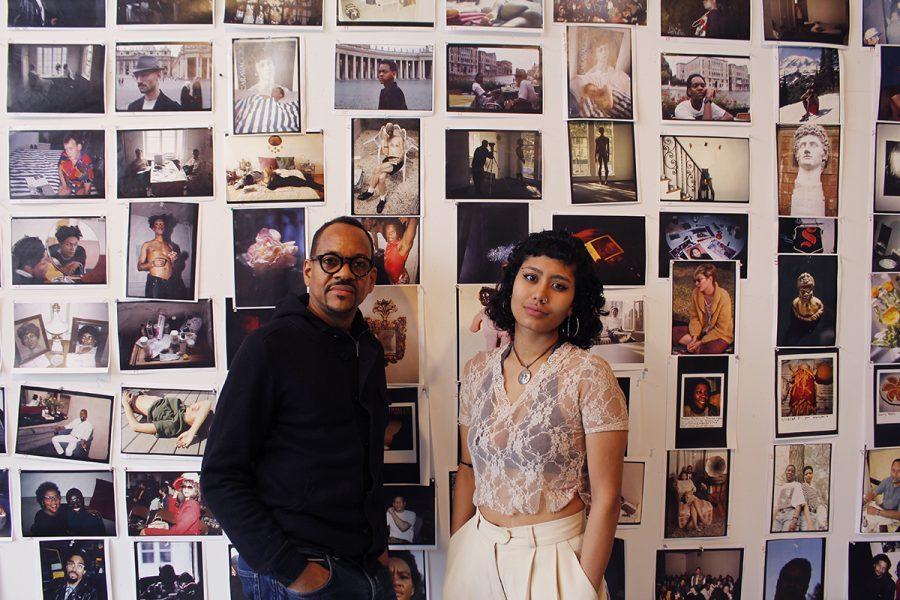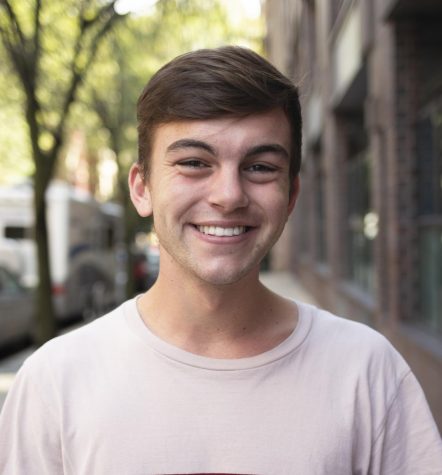NYU Professor Featured in Whitney Biennial
NYU faculty member Lyle Ashton Harris is featured in this year’s Whitney Biennial, the longest-running survey of contemporary American art. The goal of his archive is to create an intersection between the personal and the political.
March 24, 2017
Steinhardt Associate Professor of Art and Art Education Lyle Ashton Harris is one of two NYU faculty members featured in this year’s Whitney Biennial, an exhibition boasting the longest-running survey of contemporary American art. His installation features 35 mm slides from his Ektachrome Archive, a four year project that collected 250 images shot between 1986 and 1998 and over 400 hours of diaristic video logs.The Archive creates an intersection between the spheres of personal and political.
Both Harris and his studio manager, Gallatin alum Parissah Lin, spoke with WSN about the intersections between politics and art, and between personal experience and artistic expression.
Washington Square News: What inspires you and your art today?
Lyle Ashton Harris: The Archive is something I have been inspired by and deeply invested in for the past three years. I’m also inspired by the energy of the culture of our youth in the post-election period we are living in and [am] being pushed by the political conscience of our youth and of my students.
WSN: Is there a certain piece of yours that is most significant to you?
LAH: It all goes back to the archives. Upon my return from Ghana — where I lived and taught for seven years — I rediscovered these images that had been in storage for over 15 years. In looking at the Archive and going through its contents, I saw traces of the formation of my older works and that is, to me, most significant.
Parissah Lin: While going through the Archive, we are literally finding images of Lyle producing some of his most iconic pieces. These production stills are bringing back a new relevance to his established work.
WSN: What do you think are some of the most exciting things happening in art currently?
LAH: I was really taken by the demonstrations I attended after the election. In particular, I was struck by the agitprop [political messages expressed through art] of the Women’s March in New York City. I hadn’t seen anything that creative in a very long time. I was fascinated by the witty and visually engaging agitprop that dealt with the election. These artists are giving me a run for my money in terms of creativity and bringing a certain level of potency back to the visual.
WSN: With the National Endowment for the Arts being threatened, do you have any advice for discouraged artists?
PL: In every realm, I think there has been this push back towards the DIY, do-it-yourself. People are starting to recognize the system won’t always be protecting us. People are working harder every day to cultivate these places for themselves.
LAH: History repeats itself. It is important for the next generation to understand that this is not a new debate. This is something that has been going on — for example, the attack on black, queer men, artists dealing with HIV [and] women artists, etc. One should look at the strategies these artists and collectives have used to somehow find other ways to circumvent such obstacles. Institutions understand that the energy is coming from these spaces. Without this energy, the institution is just a structure with no spirit.
The Whitney Biennial opened March 17 and will remain on view through June 11. Museum admission is free with a valid NYU ID.
Email Ryan Mikel at [email protected].
















































































































































